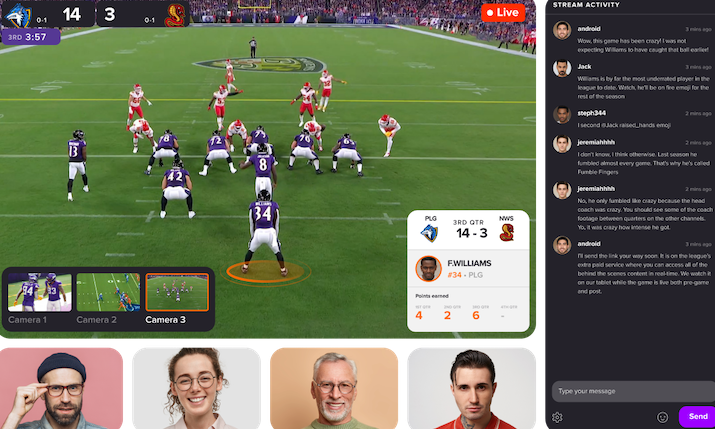The new playbook: Videon on how metadata is transforming live sports for the better
 By Paul Brown, Videon chief technology officer.
By Paul Brown, Videon chief technology officer.
In the world of live sports video a significant shift is occurring, highlighted by the increasing value of metadata. This encompasses a wide range of data from live events, including athlete health metrics, game analytics, vehicle telemetry, and real time scores, going beyond traditional video footage.
While this wealth of information offers new opportunities for fan engagement and monetisation, it also brings challenges. Capturing, managing, and utilising this diverse data effectively in real time is complex. As the industry adapts to this shift, mastering metadata usage becomes crucial in the dynamic and evolving landscape of live sports videos.
Role of metadata in live sports
Metadata’s role has evolved from a supplementary feature to a central aspect of the viewing experience. Health data, for instance, provides real time insights into players’ fitness, impacting viewer engagement, team strategies, and fan discussions. In motorsports, telemetry data offers unprecedented detail, from vehicle performance metrics to nuanced racer strategies, drawing fans deeper into the heart of the action. This seismic shift reflects a new era in sports consumption, where data-rich content offers a more comprehensive and interactive viewing experience.
Building on these insights, in the fast-paced arena of Formula Drift, TorkHub is pioneering how fans interact with the sport by integrating real time car telemetry data into the viewing experience. CEO Dennis Lomonaco says: “Our mission is to bring the visceral thrill of racing to the fans’ fingertips by providing them with real time access to telemetry data and in-car video; they’re not just spectators but have an immersive experience.” TorkHub’s innovative approach is revolutionising the motorsports viewing experience by delivering a layer of engagement that places fans at the heart of the action.
Challenges in harnessing metadata
Harnessing the full potential of metadata in live sports presents a set of challenges. One primary issue is managing and structuring unstructured data from diverse sources. Metadata can vary significantly in format and quality, making integrating into a cohesive system difficult.
Furthermore, as rights holders acquire new content feeds, normalising this data to ensure consistency across different platforms and devices becomes complex. This is vital for delivering a seamless fan experience, but achieving this uniformity requires standardization and considerable processing power.
The technical and financial hurdles of moving data to the cloud pose another significant challenge. Ensuring efficient and reliable data transfer to the cloud while managing costs demands a robust infrastructure and often substantial investment in technology and expertise. It’s a delicate balance to maintain, especially when striving for low latency in real time applications where every second counts for the end-user experience.
Strategies for consideration
In response to these challenges, strategizing metadata management requires careful decision-making between cloud and on-premises processing. The trade-off typically hinges on balancing latency and computational capacity. For instance, deploying machine learning on remotely managed edge devices for precise player and ball tracking, similar to forward-thinking companies like IMG Arena, has proven effective.
This edge computing approach facilitates real time analytics critical for live sports, minimising delays by processing data close to the source while leveraging the cloud for more extensive, less time-sensitive data analysis. This hybrid model of data processing ensures that fans receive instantaneous insights, enhancing their viewing experience with features like instant replays and performance stats. It also opens up interactive betting and second-screen experiences.
Moreover, this approach to metadata allows for targeted advertising and new subscription models, offering personalised, premium content. It’s another delicate balance that is increasingly crucial for capitalising on metadata’s full potential, from immediate fan engagement to long-term revenue generation. Addressing the gaps in predictive analytics for viewer preferences could further revolutionize fan experience and expand monetization opportunities, requiring continuous technological and expertise innovation.
The trajectory of sports broadcasting is increasingly intertwined with the strategic use of metadata. Its importance for crafting rich, interactive viewer experiences is undeniable, presenting challenges and opportunities for innovation. For industry leaders and technologists, adopting creative approaches to metadata utilisation will be vital for maintaining a competitive edge.
Looking forward, the evolution of metadata stands to redefine the sports viewing experience, promising a more connected and engaging future for fans everywhere.

